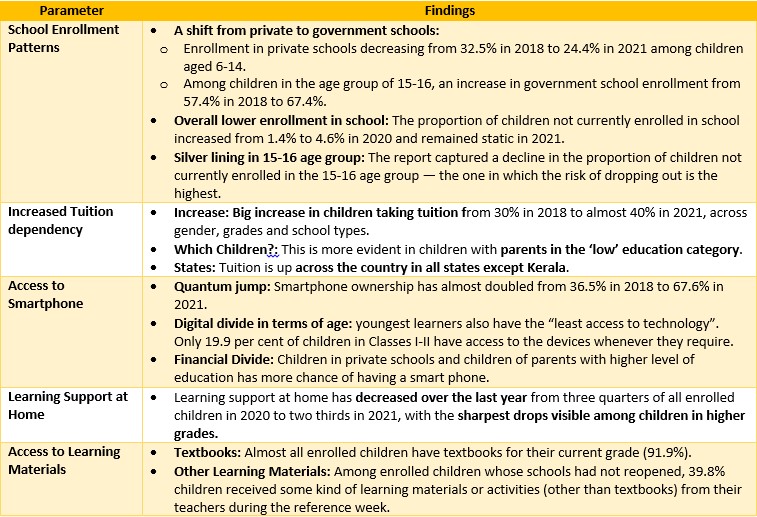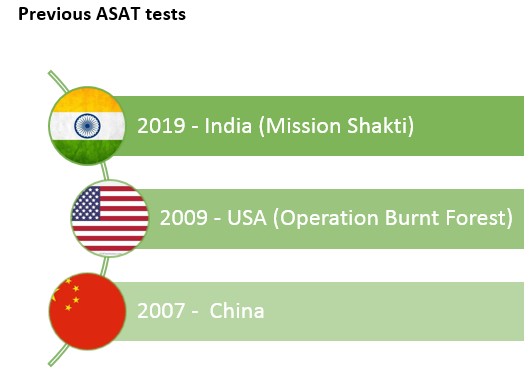Monday, 22nd November 2021
Health care in Urban India
In News
A report on ‘Health Care Equity in Urban India’, was released by Azim Premji University in collaboration with 17 regional NGOs across India.
About the News
- The report explores health vulnerabilities and inequalities in cities in India. This enhances the understanding of the health vulnerabilities of the urban poor, identifies the health system governance challenges in different cities and towns and provides a road map for how to reimagine the urban health systems.
- It looks at the availability, accessibility and cost of healthcare facilities, and possibilities in future-proofing services in the next decade.
- It also includes analysis of National Family and Health Surveys (NHFS), Census of India and inputs from state-level health officials on the provision of health care.
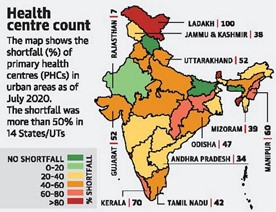
What is Health Equity?
Health equity is when everyone has an opportunity to be as healthy as possible. Equity is the absence of avoidable or remediable differences among groups of people, whether those groups are defined socially, economically, geographically, or demographically.
Findings of the Report
The report finds that there are critical factors that disrupt quality healthcare services to the poor.
- Disproportionate disease burden on the poor: The life expectancy among the poorest is lower by 9.1 years and 6.2 years among men and women, respectively, compared to the richest in urban areas.
- It notes that a third of India’s people now live in urban areas, with this segment seeing a rapid growth from about 18% (1960) to 28.53% (2001) to 34% (in 2019). Close to 30% of people living in urban areas are poor.
- Urban health governance: Complexities in defining urban boundaries and the multiplicity of health care providers both within and outside the government without coordination are a major challenge.
- The overlapping administrative jurisdictions such as that of municipal corporations (urban local bodies) and state health services and lack of coordination between them results in chaos in urban healthcare.
- Financial burden on the poor: Since there is a 10-fold difference in cost between public and private facilities, this significantly adds to their financial burden.
- 30% of the poorest seek delivery care from private sources in Bengaluru.
- Urban local bodies are less invested in health care: The leadership of urban local bodies is visible only in some metro-cities such as Bengaluru, Mumbai and Thiruvananthapuram.
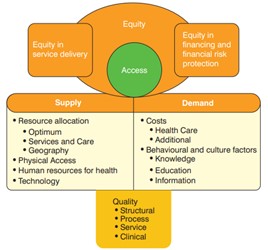
Way forward
- Increase investment in healthcare: The report calls for significant investment in scaling healthcare facilities and infrastructure in cities.
- Strengthen Community participation: The report calls for strengthening community participation and governance.
- Build database: To build a comprehensive and dynamic database on the health and nutrition status, including co-morbidities of the diverse, vulnerable populations.
- Strengthen healthcare provisioning: Strengthening healthcare provisioning through the National Urban Health Mission, especially for primary health care services.
- Policy Measures: Putting in place policy measures to reduce the financial burden of the poor, better mechanism for coordinated public health care services and better governed private health care institutions.
Sources:
Swachh Survekshan 2021
In News
The Union ministry of housing and urban affairs (MOHUA) has recently ranked cities in the Swachh Survekshan 2021.
About Swachh Survekshan
- Swachh Survekshan is an annual survey of cleanliness, hygiene and sanitation in cities and towns across India.
- The objective of the survey is to encourage large scale citizen participation, ensure sustainability of initiatives taken towards garbage free and open defecation free cities, create awareness amongst all sections of society about the importance of working together towards making towns and cities more habitable and sustainable.
- It also intends to foster a spirit of healthy competition amongst towns and cities to improve their service delivery to citizens and move towards creating cleaner cities.
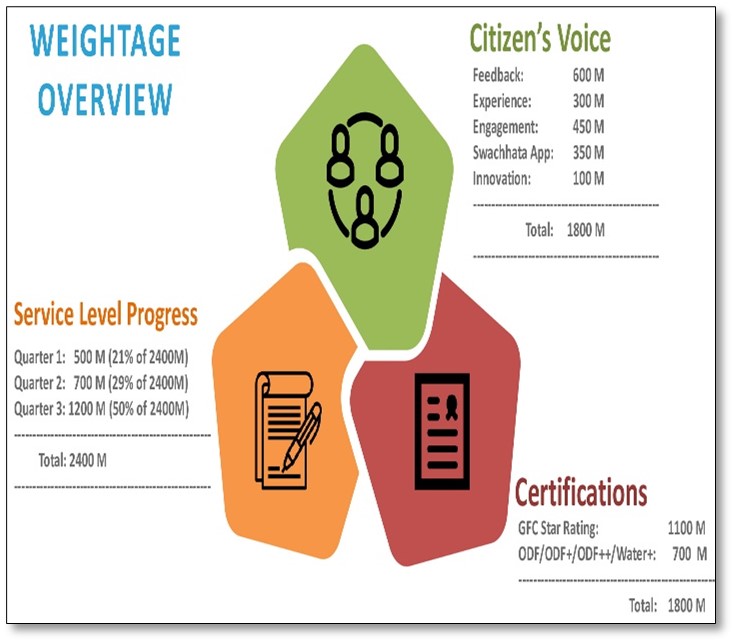
Rankings of Cities
- India’s Cleanest City: Indore has been awarded as India’s cleanest city for the 5th year in a row followed by Surat and Vijaywada.
- Best Megacity in Innovation and Best Practices: Mumbai has won an award for the best megacity in innovation and best practices.
- Cleanest Big City: Navi Mumbai has bagged the “cleanest big city” award by achieving the first rank in the category of 10 to 40 lakh population. It has also become the second best performing city in India.
- Cleanest State: Chhattisgarh has retained the first position in the state category. Maharashtra and Madhya Pradesh, having more than 100 urban local bodies, have been ranked the second and third cleanest state in the country.
- In the category of states with less than 100 urban local bodies, Jharkhand has been ranked first, followed by Haryana and Goa.
- Cleanest Ganga Town: Varanasi, has been adjudged the "cleanest Ganga town" while Bihar's Munger and Patna have been ranked second and third in the category.
- Garbage Free City: A total of nine cities -Indore, Surat, New Delhi Municipal Council, Navi Mumbai, Ambikapur, Mysuru, Noida, Vijayawada and Patan -- have been certified with 5 star city ratings under the garbage-free city category while 143 cities have been rated as 3 star.
- Cleanest cities with population of more than 1 lakh: Indore, Surat, Vijaywada, Navi Mumbai, New Delhi, Ambikapur, Tirupati, Pune, Noida and Ujjain are top ranked cleanest cities with a population of more than 1 lakh and Lucknow has been ranked the lowest among 25 cities in the same category.
- Cleanest Medium City: Noida has emerged as the country's "cleanest medium city" in the category of 3-10 lakh population.

Source:
- Swachh Survekshan 2021
- Swachh Survekshan 2021: Here are top 10 cleanest cities in annual govt survey
- Swachh Survekshan 2021: Mumbai ranks 37 but tops innovation
- Swachh Survekshan 2021: Rank raises stink as City Beautiful dumped at 66th spot, down 50 steps from last year
- Swachh Survekshan 2021: Chhattisgarh retains title of cleanest state, Indore, Surat cleanest cities
Pharmaceutical Sector in India
In News
The Competition Commission of India (CCI) has released a report titled ‘Market Study on the Pharmaceutical Sector in India: Key Findings and Observations’.
Findings of the survey
- Bulk share in total health expenditure: Pharmaceuticals including generic drugs account for about 43.2 per cent of out-of-pocket healthcare expenditure in India and about 62.7 per cent of the total health spending in the country.
- Brand trumps the price: The market for generic drugs is driven by brand competition instead of price competition despite such drugs being functionally and chemically identical.
- Perception management by incentivizing chemists: Brand differentiation in terms of a perception of different levels of quality and trade margins offered to incentivize chemists were key drivers of brand competition in India’s markets for generics.
- Lack of uniform quality regulation all over India: Enforcement and interpretation of quality regulations was not uniform across states and different regulatory and testing capacities had led to different quality standards being followed.
- Online pharmacies
- Rising market share of online pharmacies: The online pharmacy sector’s reach has expanded during the pandemic to 8.8 million households from 3.5 million households prior to the pandemic.
- Privacy related concerns because of concentration of patient data.
Recommendations of the Report
- Need to create effective price competition in generics: It can benefit consumers and improve access to affordable healthcare.
- Steps to maintain quality of drug:
- A mechanism may be devised under the aegis of the CDSCO (Central Drugs Standard Control Organization) to create awareness on quality issues, build capacity, and harmonize training and practices across the country with a view to ensure uniform and consistent application of quality standards, “.
- Increase in the frequency of testing of drugs and in the capacity of drug testing labs.
- Reduce information asymmetry: The regulator also recommended that a National Digital Drugs Databank be created and made available to regulators, industry, physicians and consumers to address information asymmetry in the sector.
- Addressing privacy related concerns related to online pharmacies:
- Online pharmacies should adopt self-regulatory measures in the areas of collection, use, sharing of data and privacy.
- However, for safeguarding patient privacy and protecting sensitive personal medical data, necessary regulations need to be enforced until the country legislates its data protection law
- Giving boost to Janaushadhi Kendras: A near-consensus emerged from the study regarding the significant role that Janaushadhi Kendras can play in enhancing competition and improving the availability and awareness of affordable generic drugs in the market.
The Competition Commission of India (CCI)
- The CCI functions as a market regulator by preventing and regulating anti-competitive practices in the country.
- It works to eliminate practices having adverse effect on competition, promote and sustain competition, protect the interests of consumers and ensure freedom of trade in the markets of India.

Source:
John F. Kennedy assassination
On November 22, 1963, John F. Kennedy, the 35th President of the United States, was shot to death during a motorcade in Dallas. Vice President Lyndon B. Johnson was sworn in as president. As no conclusive proof of any conspiracy could be found, Kennedy’s assassination, the most notorious political murder of the 20th century, remains a source of bafflement, controversy, and speculation. John F. Kennedy faced a number of foreign crises, especially in Cuba and Berlin, but managed to secure such achievements as the Nuclear Test-Ban Treaty and the Alliance for Progress. He was the youngest man and the first Roman Catholic ever elected to the presidency of the United States. His administration lasted 1,037 days.

Source:
CEA (Cyber Security in Power Sector) Guidelines, 2021
In News
Ministry of Power has in October 2021 released the guideline for the Cyber Security in Power Sector, a critical information infrastructure (CII).
Identification of CIIs
- The 2008 amendment to the IT Act 2000 defined ‘Critical Information Infrastructure’ (CII) as “those facilities, systems or functions whose incapacity or destruction would cause a debilitating impact on national security, governance, economy and social well-being of a nation.”
- The law also added two sections – 70 (A) for all ‘Critical’ systems and section 70 (B) for all non-critical sections and assigning the responsibility to protect the critical systems to The National Critical Information Infrastructure Protection Centre (NCIIPC).
The NCIIPC has identified five broad areas that cover the ‘critical sectors’. These are: Power & Energy; Banking, Financial Institutions & Insurance; Information and Communication Technology; Transportation; and E-governance and Strategic Public Enterprises.
Electric power industry as critical infrastructure
- Fits in the Definition of Critical Infrastructure: A key point that has been factored in while identifying CII is the inter-dependencies that they have, to determine which are the ‘most critical’. Therefore, using this matrix, NCIIPC settled on the Power Sector as the most critical followed by the Energy Sector.
- High Dependence on Power Sector: Today we depend on electricity for basic needs such as food, water, shelter, communication, transport, pipeline, employment and healthcare. These essentials degrade or disappear without electricity. Thus, electric power has become a central component of what has come to be known as critical infrastructure.
- Vulnerable to Cyber Threats: The widespread and increasing use of Supervisory Control and Data Acquisition (SCADA) systems for control of energy systems provides increasing ability to cause serious damage and disruption by cyber means. The exponential growth of information system networks contributes to system vulnerability.
Background for Cyber Security in Power Sector Guidelines
- Cascading Effect of Cyber Attacks: Cyber intrusion attempts and Cyber-attacks in any critical sector are carried out with a malicious intent. In Power Sector it’s either to compromise the Power Supply System or to render the grid operation in-secure. Any such compromise may result in maloperations of equipments, equipment damages or even in a cascading grid brownout/blackout.
- National Security Concerns: The gain of sensitive operational data through such intrusions may help the Nation/State sponsored or non-sponsored adversaries and cyber attackers to design more sinister and advanced cyber-attacks.
- Current Security Mechanisms: Ministry of Power has created 6 sectoral CERTs (Computer Emergency Response Team) namely Thermal, Hydro, Transmission, Grid Operation, RE and Distribution for ensuring cyber security in Indian Power Sector.
- Each Sectoral CERT has prepared their sub-sector specific model Cyber Crisis Management Plan(C-CMP) for countering cyber-attacks and cyber terrorism.
- India’s National Smart Grid Mission: Introduction of a smart grid brings with it certain security risks and concerns, particularly to a nation’s cyber security. Increased interconnection and integration may render the grids vulnerable to cyber threats, putting stored data and computers at great risk.
- Absence of Power Sector Directives: Currently, though many cyber security directives and guidelines exist, but none of them are power sector specific. Hence, Ministry of Power has directed CEA to prepare Regulation on Cyber Security in Power Sector.
Salient Features of the Guidelines
The CEA, under provisions in the ‘Central Electricity Authority (Technical Standards for Connectivity to the Grid) (Amendment) Regulations, 2019’, framed the guidelines.
- Definitions: It defines or specifies various key terms such as Responsible Entity (Transmission Utilities, Load despatch centres, Trading Exchanges Regulatory Commissions etc.), Critical Assets, Critical System and Cyber Assets, Protected System, Vulnerability etc. in relation to the cyber security.
- Principles: It lays down the Cardinal Principles to be followed while framing the cyber security policy by the Responsible entity. It also mandates its annual review.
- Appointment of Chief Information Security Officer (CISO): The Responsible Entity shall mandatorily appoint a CISO. Roles and Responsibility of CISOs shall be as laid by CERT-In and ring-fenced to ensure cyber security of the Cyber Assets of the Responsible Entity.
- Identification of CII: For this, the Responsible Entity shall submit to NCIIPC through Sectoral CERT, details of Cyber Assets, Critical Business Processes and underlying information infrastructure along with mapped impact and Risk Profile.
- Electronic Security Perimeter: The Responsible Entity shall identify and document the Electronic Security Perimeter and all Access Points to the perimeter. The Responsible Entity shall ensure that every Critical System resides within an Electronic Security Perimeter.
- Cyber Security Requirements
- The Responsible Entity shall routinely audit and test security properties of the Critical System and must act upon, in case if any new vulnerabilities is identified.
- Cyber Supply Chain Risk Management: The guidelines mandate ICT-based procurement from identified “Trusted Sources” and identified “Trusted Products”. In case the procurement is not from a trusted source, the product needs to be tested for Malware/Hardware Trojan before deployment for use in power supply systems.
Apart from these, the Guidelines also talk about Cyber Risk Assessment and Mitigation Plan, Phasing out of Legacy System, Cyber Security Training, Cyber Security Incident Report and Response Plan and Cyber Security Audit.
Conclusion: The guidelines are the first such regulation in power sector and require mandatory Compliance by all Responsible Entities. This is important given that the power sector has been deploying emerging technologies in its core operations. In August 2021, the government approved the Revamped Distribution Sector Scheme to improve all DISCOMs operations by boosting the supply infrastructure using artificial intelligence (AI)-based solutions. This guideline will help better utilisation of scheme objectives.
Model Q: Outline the electric power sector as a critical infrastructure. Discuss the need for Cyber Security in Power Sector) Guidelines in India.
Sources:
World Fisheries Day
World Fisheries Day, celebrated on November 21, is dedicated to highlighting the critical importance of healthy ocean ecosystems and to ensure sustainable stocks of fisheries in the world. On 21st November 1997, the working fishermen and women representing World Forum of Fish Harvesters & Fish Workers from 18 countries met at New Delhi and established the World Fisheries Forum (WFF) advocating for a global mandate of sustainable fishing practices and policies. To commemorate this occasion, every year 21st November is celebrated all over the world as World Fisheries Day. Indian fisheries and aquaculture is an important sector of food production providing nutritional security, besides livelihood support and gainful employment to more than 14 million people, and contributing to agricultural exports.

Sources:
Permaculture
- Context: Environmental sociologists have explained as to how permaculture offers a path to climate justice.
- Permaculture is a portmanteau of permanent agriculture and permanent culture.
- It is the conscious design and maintenance of agriculturally productive ecosystems which have the diversity, stability, and resilience of natural ecosystems.
- It is the harmonious integration of landscape and people -providing their food, energy, shelter, and other material and non-material needs in a sustainable way.
- Permaculture can be seen in contrast to intensive agriculture, which eventually leaves land unfit for farming. It draws from several disciplines including organic farming, agroforestry, integrated farming, sustainable development and applied ecology.
- High-density crops and the use of single crops (monoculture) over large expanses of lands strips away necessary nutrients as generations pass, eventually leaving the land barren. At the same time, artificial fertilizers can build up salts over time, making the soil inhospitable to plants.
- But Permaculture tries to look at a piece of land in a holistic manner, integrating every animal and plant living on it, and combines that with social structures designed to foster long-lasting agriculture.
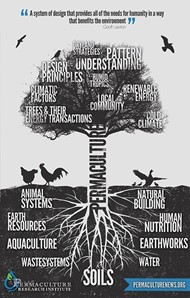
Source:
Audit Diwas
- Context: The Prime Minister has unveiled the statue of Sardar Vallabhbhai Patel at the office of the Comptroller and Auditor General of India (CAG) in New Delhi to mark the first Audit Diwas.
- Audit Diwas is celebrated to mark the historic origins of the institution of CAG and the contribution it has made to the governance, transparency and accountability over the past several years.
- Article 148 of the Constitution deals with the appointment, oath and conditions of service of the CAG.
- CAG is an independent authority under the Constitution of India. He is the head of the Indian audit & account department and chief Guardian of Public purse.
- He is appointed by the President by warrant under his hand and seal and can only be removed from office in like manner and on like grounds as a Judge of the Supreme Court.
- CAG audits the accounts related to all expenditure from the Consolidated Fund of India, of each state and UT’s having a legislative assembly, Contingency Fund and the Public Account of India and each state.
- He also audits all trading, manufacturing, profit and loss accounts, balance sheets etc., kept by any department of the Central and the state governments, receipts and expenditure of all bodies and authorities substantially financed from the Central or State revenues and accounts of any other authority when requested by the President or Governor e.g., Local bodies.

Source:
- Audit Diwas: CAG is a heritage and every generation should cherish it, says PM Modi
- Comptroller and Auditor General of India
- Comptroller and Auditor General of India
Urban Canyon Effect
- Context: Colaba and Mazagaon in South Mumbai have emerged as the most polluted localitiesin the city, with the air quality index (AQI) exceeding 330 indicating “very poor” air.
- The urban canyon effect is defined as the result of building and street architecture on airflow in the street.
- The levels of traffic-related air pollution can be substantially elevated along a road surrounded by tall buildings.
- The canyon effect occurs when tall buildings flank both sides of city streets, restricting air movement that eventually increases the concentration of pollutants in the ambient air.
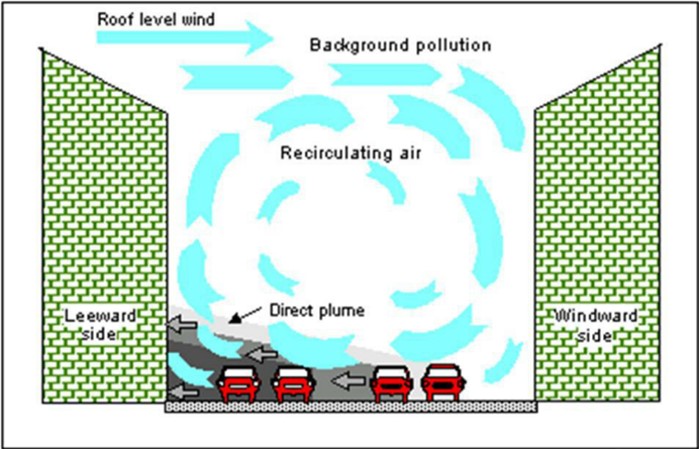
Source:
- Explained: Why Mumbai’s Colaba, Mazagaon have ‘very poor’ air quality
- Capturing the urban canyon effect on particle number concentrations across a large road network using spatial analysis tools
Image Source:
Puri heritage corridor
- Context: Odisha Chief Minister is expected to lay the foundation stone of Puri heritage corridor.
- The Puri Heritage Corridor Project was unveiled in 2019 to transform the holy town of Puri into an international place of heritage.
- The project includes redeveloping major portions of the holy town and in the vicinity of the temple for visitors and tourists.
- The project will include Shree Jagannath Temple Administration (SJTA) building redevelopment, a 600-capacity Srimandir reception centre, Jagannath cultural centre etc.
- The Jagannath Temple of Puri is an important Hindu temple dedicated to Lord Jagannath, located in Odisha.
- The temple is believed to be constructed in the 12th century by King Anatavarman Chodaganga Deva of the Eastern Ganga Dynasty.
- It is called ‘Yamanika Tirtha’where, according to the Hindu beliefs, the power of ‘Yama’, the god of death has been nullified in Puri due to the presence of Lord Jagannath.
- This temple was called the “White Pagoda” and is a part of Char Dham pilgrimages (Badrinath, Dwaraka, Puri, Rameswaram).

Source:
- Explained: What is the Puri heritage corridor, whose foundation will be laid soon in Odisha?
- Odisha CM to do bumi pooja of Puri heritage corridor Project on October 18
Image Source:
Winter air pollution and stubble burning in North India: A regulatory governance perspective: ORF
Essence: The article highlights the problem of air pollution in the capital of the country, the reasons behind it and the approach needed to eradicate it. Every year the pollution prevails and yet every year state seems helpless and weak in front of the farmers who end up resorting to stubble burning. The article also exposes the inability of governments to control other sources of winter pollution too, like firecracker, vehicular pollution. The problem requires regulatory governance that has some sequential steps to be followed.
To achieve success in dealing with the problem of stubble burning leading to air pollution tough decisions is needed and science of regulatory governance provides an apt framework for this. The article also talk about systems-thinking approach to explore the root cause of the problem. This, coupled with the art of political decision-making, can be an effective recipe for addressing the issue of stubble burning comprehensively and effectively.
Why you should read this article?
- To understand the approach needed to solve the issue of stubble burning and air pollution
- To understand the steps involved in the approach to be followed.
- The article provides a solution that can be used to conclude answers relating to issue of stubble burning. GS – 3, environment
Source:
Farm laws: Finding the right public-private mix in farming: TH Businessline
Essence: The article explores the different approached for development of agri sector in India, in the context of recent repealing of the Farm Laws. The article provides various approaches to find the right public private mix in farming. Out of the approaches provided, the middle path which provides for policy intervention from government and using the private sector as the instrument for those policy interventions has been suggested to best suit the Indian scenario.
The reason for the mixed path being the best suited is that the government does not have enough funds like private sector to improve the livelihood of farmers. Second being the performance record of private sector in solving many of our other problems in last 30 years. So, the private sectors role should not be restrained rather be facilitated. It is high time agriculture should be transformed into a business rather than a livelihood programme.
Why you should read this article?
- To understand various approaches to public private mix in farming.
- To understand which approach will be best suited in Indian scenario.
- Points from the article could be used to answer –“Why private participation in agriculture should be allowed in India.” – GS-3, economy.
Source:
Reliable data, good policy: TH
Essence: India relies on evidence-based information for policymaking in socio-economic development of the country. Data is collected through decennial census and other surveys for generating usable information.
However, it becomes important to highlight issues in the process. Inordinate delays in survey and production of usable information renders the process less useful, decreases scrutiny and undermines accountability. Change in methodology for estimation makes the data incomparable with past surveys. There have also been questions regarding the authenticity of Monthly Household Consumer Expenditure’ (MHCE) (year 2017-18) and the government has openly acknowledged that in the past. Due to covid, certain surveys have been delayed.
Cumulatively, there has been a delay of four-five years due to these inconsistencies during data collection. The government could take help of new technologies and embed them in the present public data production set up to use them in boosting the governance process.
Why you should read this article?
- To understand the various lacunae in data driven process of policymaking.
- To know the interventions possible in data collection system.
Source:
HomoSEP: Technology addressing manual scavenging
Background
- Manual scavenging is tied to India's caste structure, with so-called lower castes being expected to do this work. Manual scavengers are among India's poorest and most marginalised communities.
- Despite progress, manual scavenging still persists in India. There are about 13,14,652 toilets where human excreta is flushed in open drains, 7,94,390 dry latrines where human waste is physically cleaned.
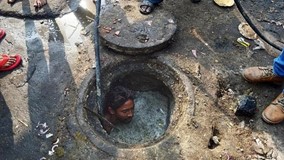
Technology to address manual scavenging:
- A team from IIT Madras' Mechanical Engineering Department and Center for Non-Destructive Testing (CNDE) have built a robot HomoSEP (“homogeniser of septic tanks”) to put a stop to the practise of people being thrown into septic tanks.
- It is like an inverted umbrella that has a shaft attached to blades that can open when introduced into a septic tank.
- Research and data has been collected from those who were engaged in this work for better understanding of the real-time situation and condition.
- The researchers have decided to distribute eight units of the robot in Tamil Nadu, with the help of the Safai Karamchari Andolan to identify the locations for its use.
- Along with technology development alternative employment opportunities also needs to be crafted for the community for better rehabilitation.
Quote:
“I may not be born again, but if it happens, I will like to be born into a family of scavengers, so that I may relieve them of the inhuman, unhealthy and hateful practice of carrying night soil,"- Gandhi
Source:
Image Source:
Share the article
Get Latest Updates on Offers, Event dates, and free Mentorship sessions.

Get in touch with our Expert Academic Counsellors 👋
FAQs
UPSC Daily Current Affairs focuses on learning current events on a daily basis. An aspirant needs to study regular and updated information about current events, news, and relevant topics that are important for UPSC aspirants. It covers national and international affairs, government policies, socio-economic issues, science and technology advancements, and more.
UPSC Daily Current Affairs provides aspirants with a concise and comprehensive overview of the latest happenings and developments across various fields. It helps aspirants stay updated with current affairs and provides them with valuable insights and analysis, which are essential for answering questions in the UPSC examinations. It enhances their knowledge, analytical skills, and ability to connect current affairs with the UPSC syllabus.
UPSC Daily Current Affairs covers a wide range of topics, including politics, economics, science and technology, environment, social issues, governance, international relations, and more. It offers news summaries, in-depth analyses, editorials, opinion pieces, and relevant study materials. It also provides practice questions and quizzes to help aspirants test their understanding of current affairs.
Edukemy's UPSC Daily Current Affairs can be accessed through:
- UPSC Daily Current Affairs can be accessed through Current Affairs tab at the top of the Main Page of Edukemy.
- Edukemy Mobile app: The Daily Current Affairs can also be access through Edukemy Mobile App.
- Social media: Follow Edukemy’s official social media accounts or pages that provide UPSC Daily Current Affairs updates, including Facebook, Twitter, or Telegram channels.


